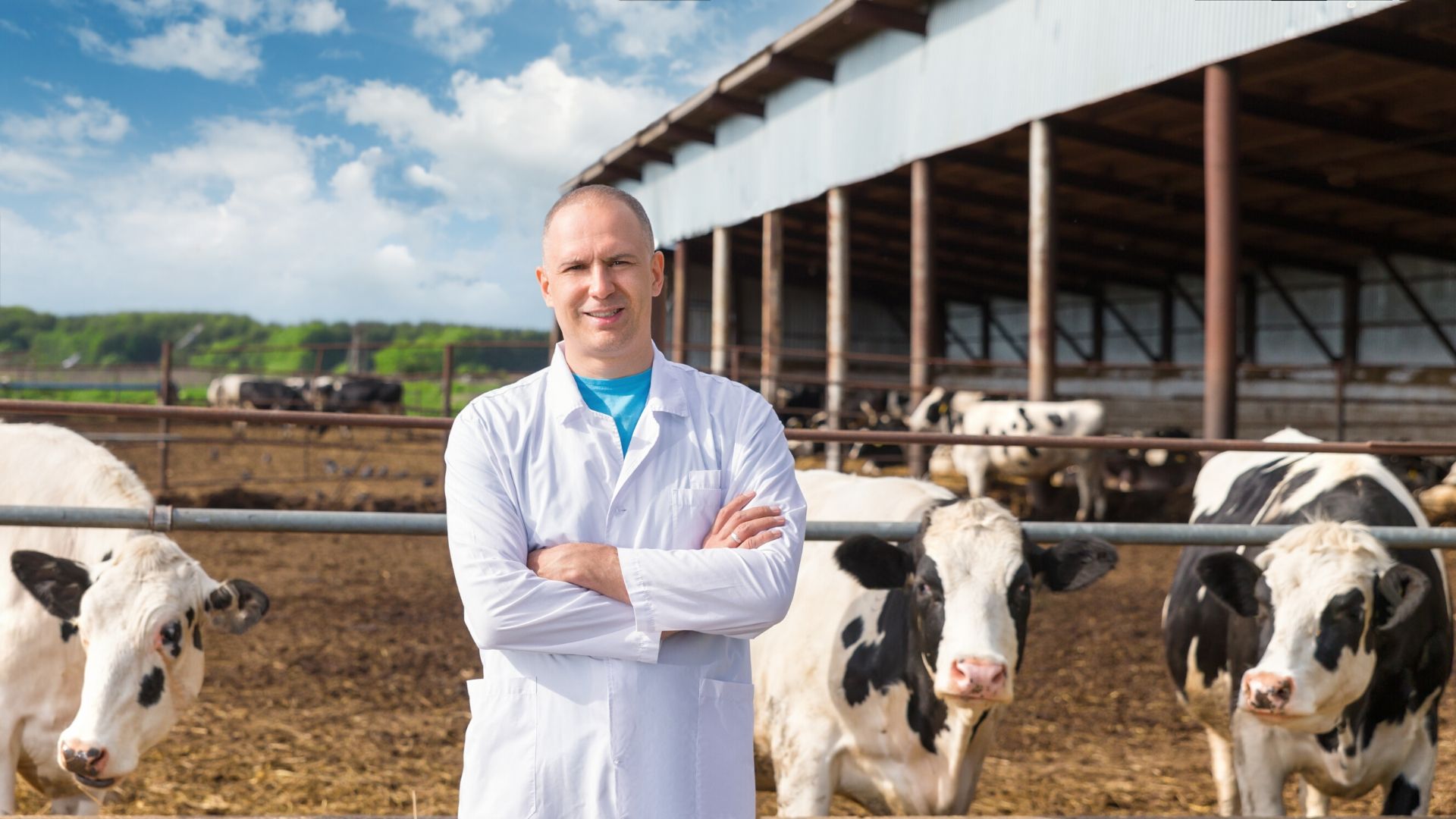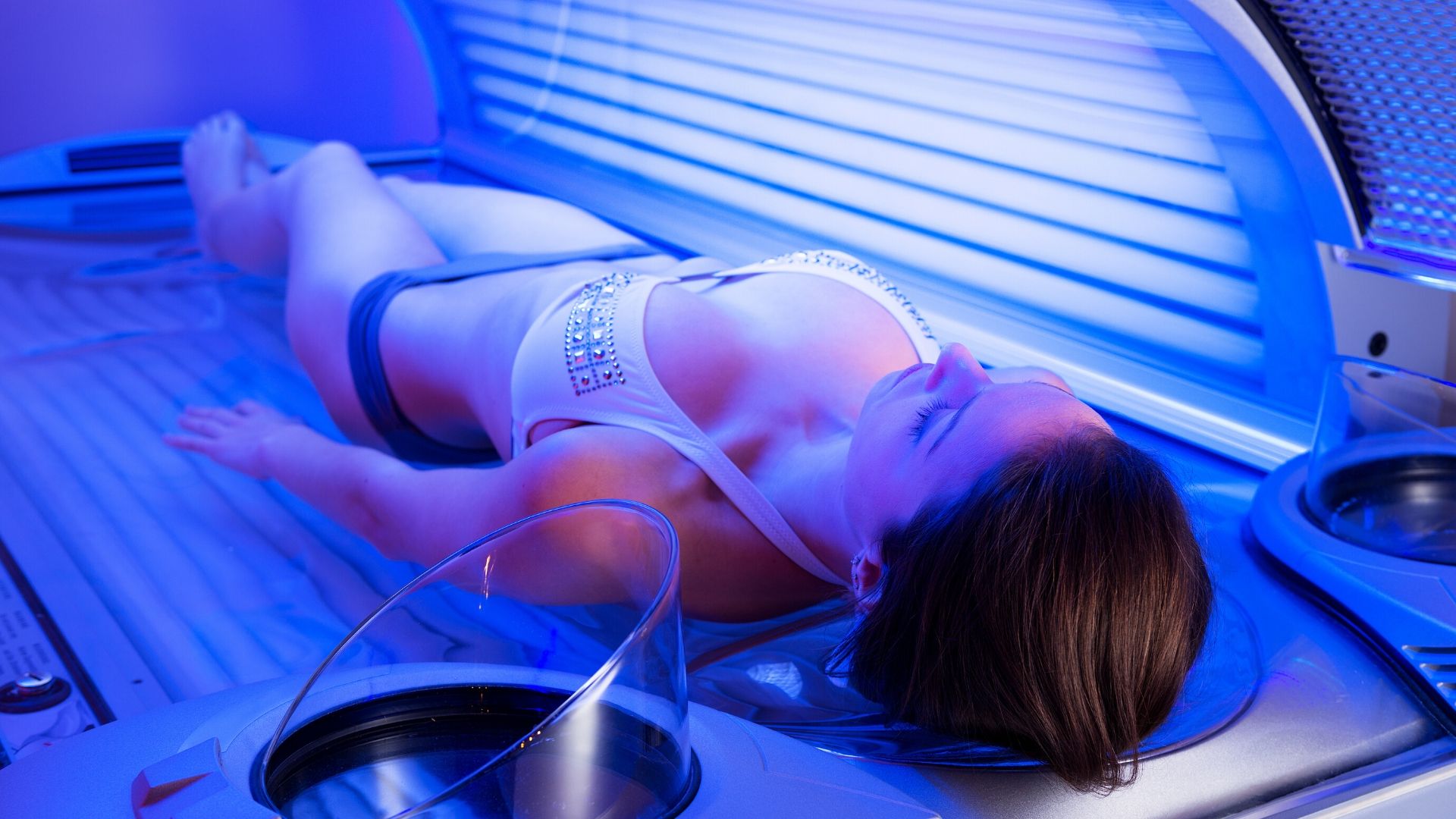Keep your children safe in the sun
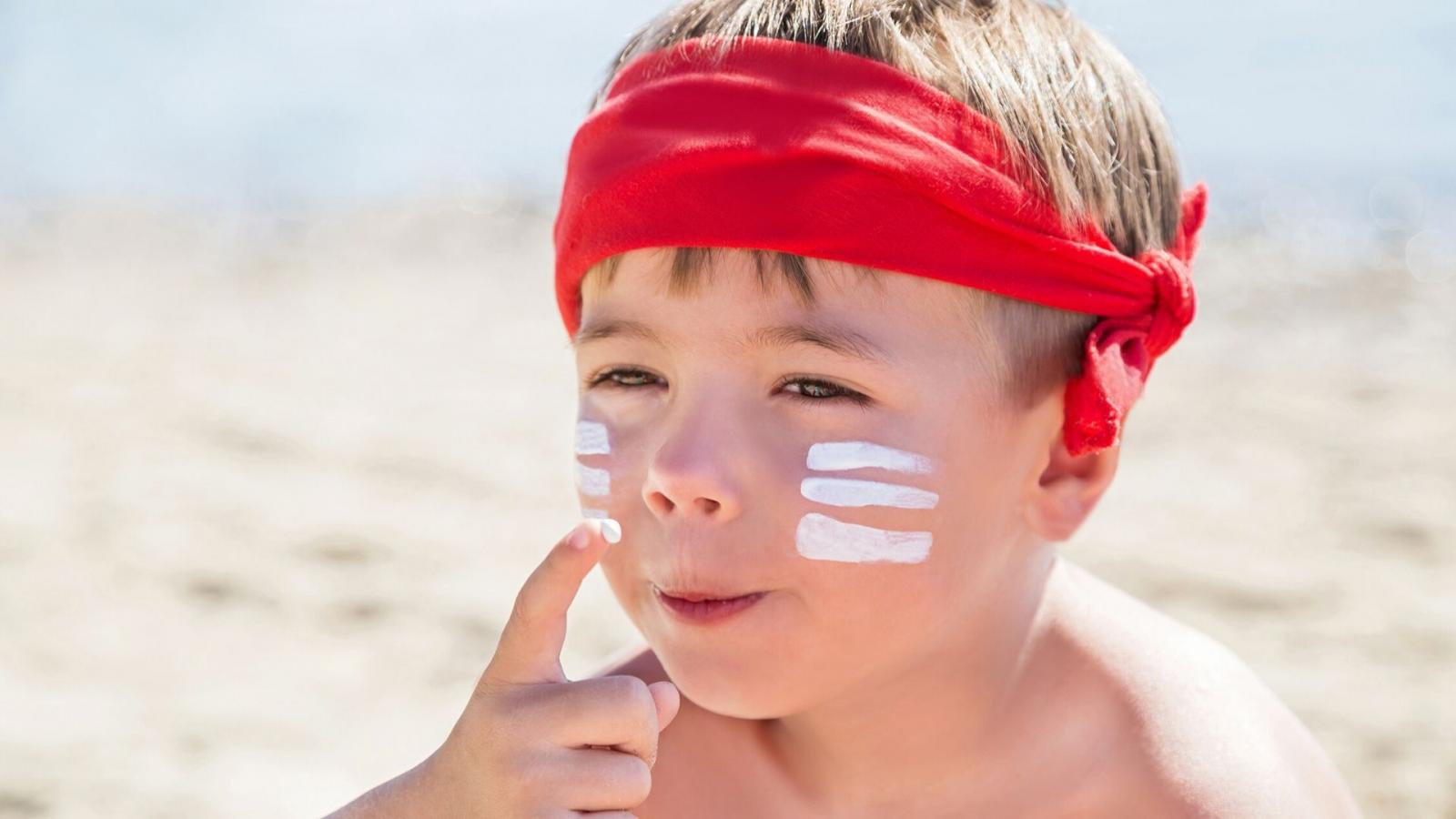
On this page:
Why we need to protect children from UV damage
Playing with friends when out and about is an important part of growing up for most children and young adults.
Getting exercise is one of the benefits along with exposure to the sun’s ultraviolet (UV) rays. UV rays help the body produce vitamin D which is needed for general health. However UV exposure is also linked to an increased risk of skin cancer. For this reason it is important to educate children about how to enjoy the outdoors while protecting their skin from the sun.
While skin cancer is rare in children, much of the UV damage that leads to it takes place in the early years of life.
Research tells us that:
- Getting sunburnt in childhood or adolescence can increase the risk of melanoma--the most serious form of skin cancer--in later life.
- Tanned skin is damaged skin. The tan a child gets may fade but the damage remains - and can lead to skin cancer later in life.
- People get most of their sun exposure before the age of 18.
Skin cancer can take 10-15 years to develop and is the most common cancer in young people in Ireland aged 15 and 44 years of age.
In a recent study carried out in Ireland, the largest increase in cases of skin cancer was found in young affluent city dwellers. It is likely that they are getting skin cancer from being exposed to repeated sunburn, probably when out and about at leisure activities.
By protecting children and young people’s skin when they are outdoors you can reduce their risk of developing skin cancer in years to come. But, using sunscreen alone is not enough.
No sunscreen gives 100% protection from UV damage. Also, many people do not use enough sunscreen and as a result get a fraction of the protection they were hoping for.
For the best possible protection for UV damage follow the five steps of the SunSmart Code. It is our guide to how to reduce your risk of skin cancer and is relevant to adults and children alike.
It's important to be a good role model too. Children tend to learn much from what they see adults doing.
You will also need to consider how to protect your child when they are in someone else’s care: If your child is going to camp, playschool or any other location how can you ensure they are following the SunSmart Code.
Protecting your children from UV rays
Here are a few tips for keeping your children safe in the sun:
- Keep babies under 6 months in the shade as much as possible
- Keep older children safe by following the SunSmart Code
- Take care whether you are in Ireland or abroad - UV damage from Irish weather is just as harmful as that from warmer climates
- Take care on cloudy days too – up to 90% of UV rays can pass through light cloud
Children who are at greater risk of skin damage:
All children are at risk of UV damage, even those who tan easily and need to be protected with the SunSmart code. However, some children are more at risk, especially if they have:
- Pale or freckled skin that does not tan or burns before it tans.
- Red or fair hair.
- Blue, green or grey eyes.
- A large number of moles.
Babies and the sun
Keep babies under six months in the shade as much as possible:
- Make use of shade that is around you and use extra shade for prams, strollers as needed.
- Make sure the shade casts a dark shadow.
Make sure babies are covered up:
- Dress babies in loose-fitting outfits with long sleeves and long shorts. Make sure they are made from close-woven material that does not allow sunlight through.
Sunscreen:
- If infants are kept in the shade and covered with clothes you will only need to use a small amount of sunscreen on the areas not covered with clothes. This can be reapplied every two hours.
- Choose a sunscreen that is made for children and babies. Make sure to patch test it on their skin first. If their skin reacts to the product stop using it straight away, and try a different brand.
Vitamin D for babies 0 – 12 months:
- The HSE recommends that you give your baby 5 micrograms of vitamin D3 as a supplement every day from birth to 12 months if they are:
* Breastfed
* Taking less than 300mls or 10 fluid oz (ounces) of infant formula a day
All babies who are being breastfed should continue to get a vitamin D supplement after birth, even if you took vitamin D during pregnancy or while breastfeeding.
You do not need to give your baby a vitamin D supplement if they are fed more than 300mls or 10 fluid oz (ounces) of infant formula a day. This is because there has been an increase in the amount of vitamin D added to infant formula. This is due to a change in EU law as of February 2020.
There are many suitable infant vitamin D3 supplements available to buy in Ireland. Use a supplement that contains vitamin D only.
How to prepare your kids for a day out
Hats
- Find a hat they like to wear.
- Make sure it has a wide brim that gives shade to the face, neck, head and ears.
- A tie under the chin may stop them from taking it off.
Sun glasses
- It is important that children, as soon as they can, wear wrap-around sunglasses that give UV protection.
Sunscreen
- Only use sunscreen on those areas of the skin that cannot be protected by clothes or a hat.
- Use a broad spectrum (UVA/UVB) water-resistant sunscreen with a high UVA protection and Sun Protection Factor (SPF) 50+ for children (at least 30+ for adults).
- Choose a sunscreen (sprays, lotions, creams and mists) that the child likes using.
- Put plenty of it on dry skin 20 minutes before they go outside and reapply every two hours.
Shade
- As far as it is possible plan outdoor events so that children can be in the shade when UV rays are at their strongest. In Ireland this is generally from 11am to 3pm from April to September.
The UV Index
The UV index tells us what level of UV radiation is reaching the earth's surface. It ranges from zero to 11+. The higher the UV index, the greater the risk of skin and eye damage and the less time it takes for harm to occur.
Get to know the UV Index. It will help you decide the type of sun protection to use.
Stay safe by limiting time in the sun when UV is strongest, typically between the hours of 11am to 3pm. Check the UV index on the Met Eireann website
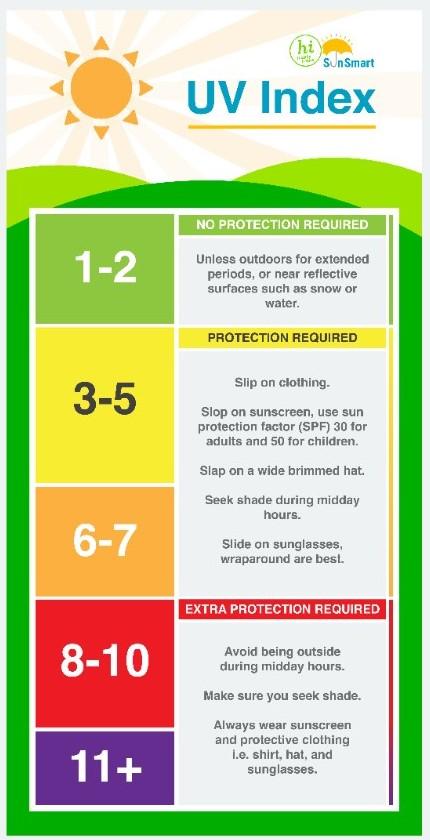
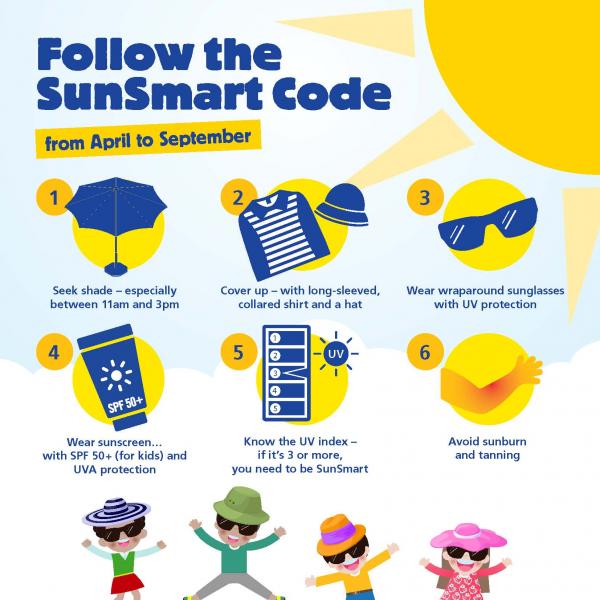
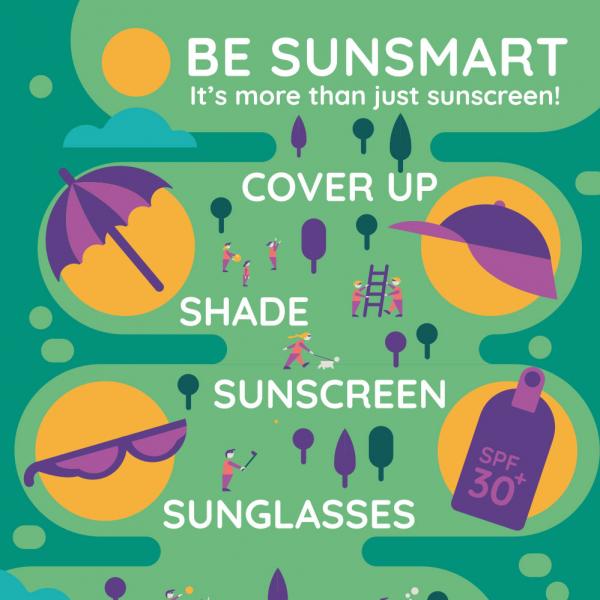
For more information
Phone
1800 200 700
